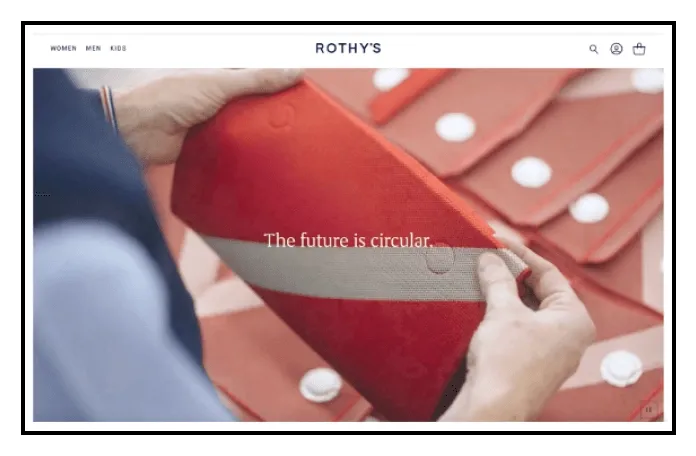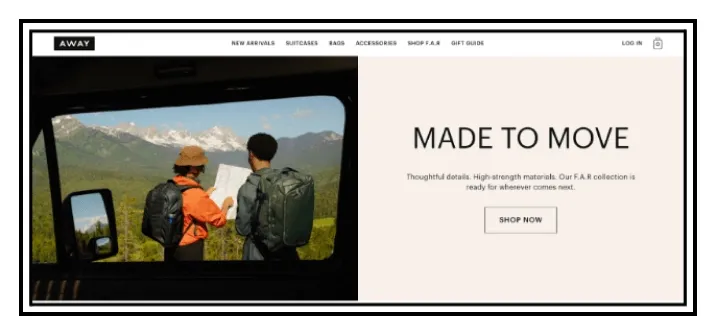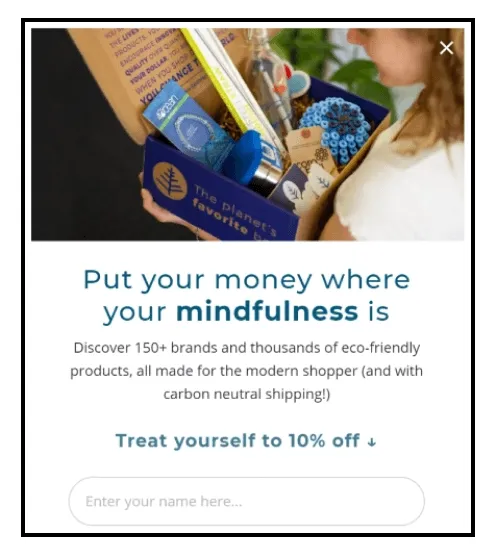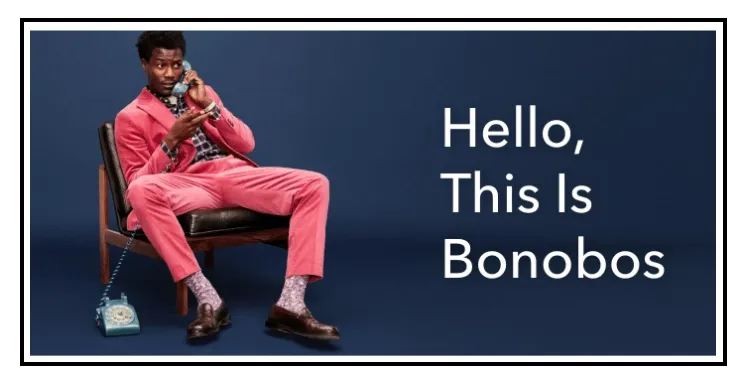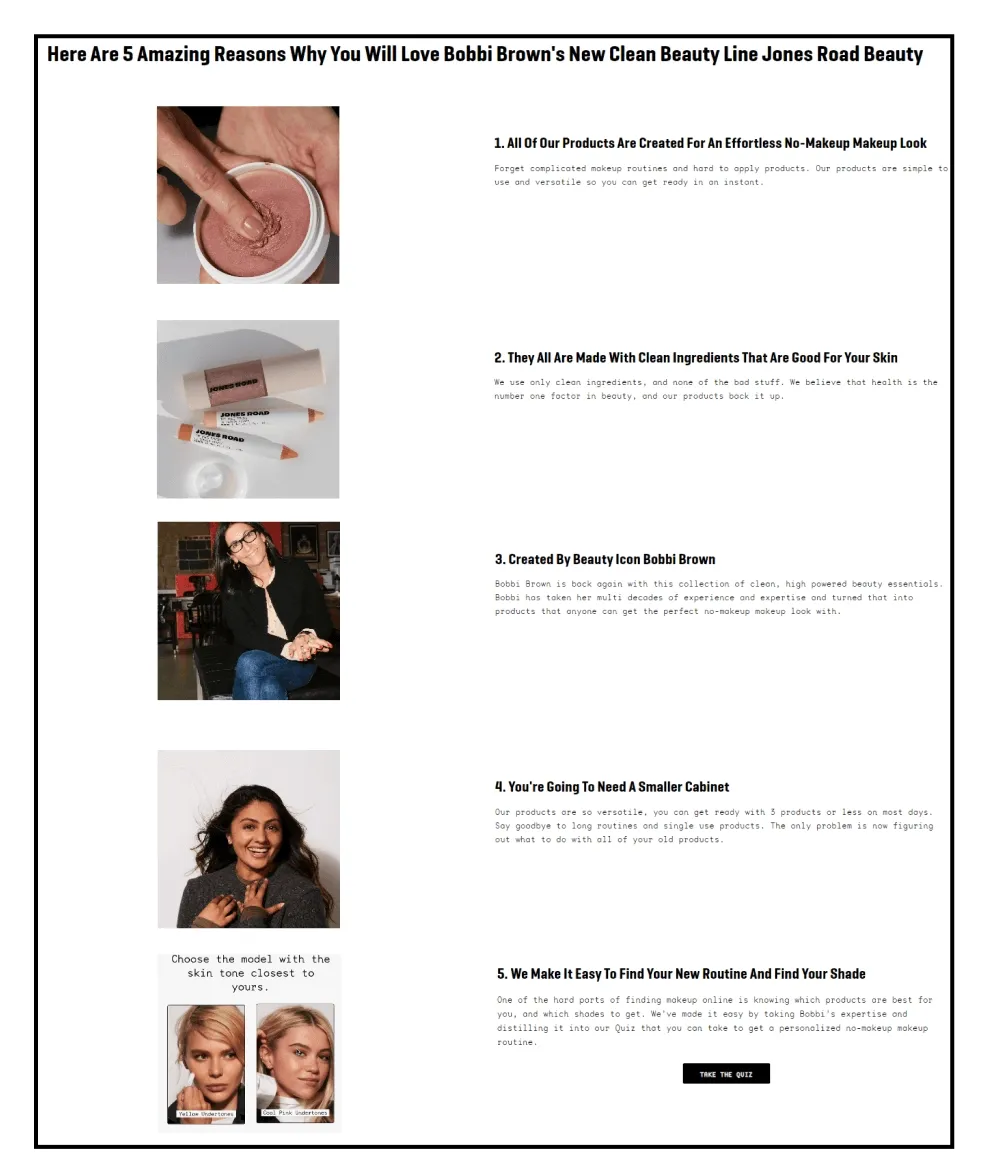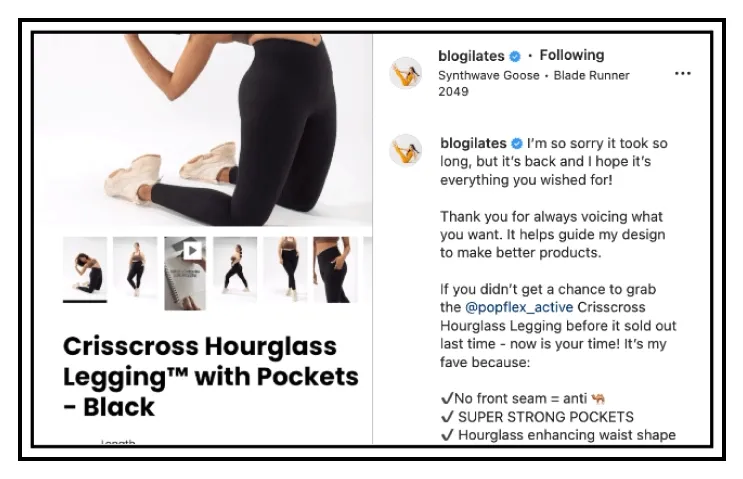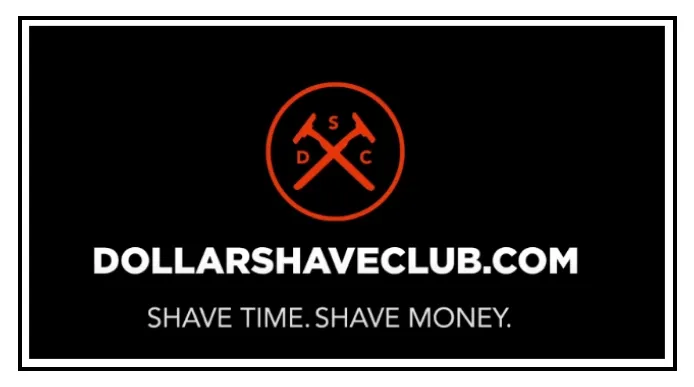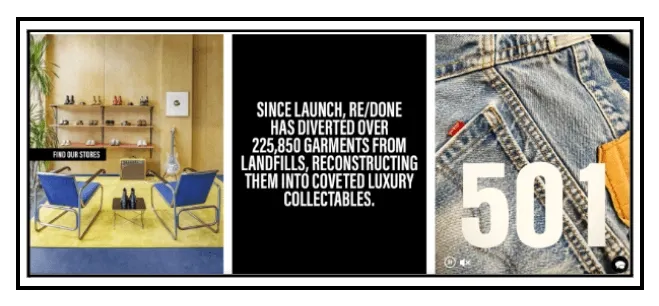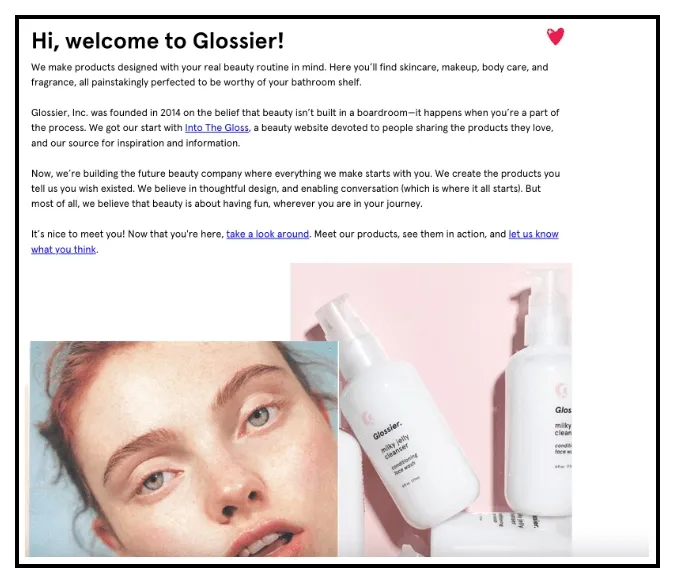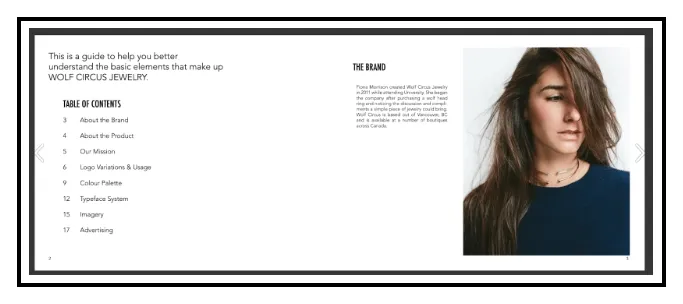Humans love stories. Cave paintings, folklore, and even viral digital campaigns are proof of that.
Storytelling is all about weaving anecdotes, composing lyrical language, and integrating concepts. Indeed, the perfect trifecta to get your customers’ attention and loyalty. As a DTC/Ecommerce business owner, the power of brand storytelling convinces your clientele that your product/service is exactly what they are looking for.
Good storytelling also includes relevance where your customer can resonate with what your product/service/brand stands for. It is important to note that storytelling should be about a person and not a target audience.
After all, it all boils down to how you make them feel.
More than 3 out of 4 Millennials (78%) prefer spending money on an experience instead of just purchasing a product. They want an emotional connection that will drive the purchase. And across Ecommerce and DTC brands, the ethos of storytelling remains the same.
What is brand storytelling?
Simply put, brand storytelling uses narratives to create an emotional and memorable connection between your brand and your customers. The most successful brand stories are authentic, drive growth, foster customer loyalty and build an engaged community.
Throughout this article, we’ll share brand storytelling tips that you can implement, to create a DTC/Ecommerce story that your audience would resonate with.
Importance of storytelling in Ecommerce
Today, selling is not limited to a particular website or marketing collateral. Your audience expects a multi-channel engagement that ultimately ties them to your brand’s core belief and mission.
Storytelling creates a sustainable brand image instead of just focusing on the selling process. Connect the story with how your DTC product will benefit your customers, and how it is solving their pain points will be more relevant to your audience. Tie it up with an authentic voice for your brand to create a recall value and you have a tale to share.
American sustainable fashion brand Rothy’s is case in point.
Instead of just selling their products and going down the conventional path of ‘what looks good’, Rothy’s narrates a special story of sustainability, what it means, and how their manufacturing process ensures they create products with purpose.
As one would scroll down their website, they would be taken along a journey of collection, segregation, treatment, and finally production, all abiding by their laws of sustainability. The narrative is then neatly tied up with impact, in this case, how much plastic they recycled along the process.
importance-of-storytelling-in-ecommerce-rothy’s
Elements of Storytelling
Successful brand storytelling is not about bright pictures or big words — but more about inclusion, capturing attention, and then driving results. Having a structured approach to creating a compelling story will declutter the creative process for your brand and help create engaging narratives effectively.
Here are not-to-miss elements of creative brand storytelling that stay consistent across all industries, products, and services.
1) Determine core value or theme
In order to determine the core theme of the story, you need to have clear answers to the following questions:
- What does your product or service stand for?
- Is your brand resolving an existing problem?
- What are the relative elements of your brand?
Here’s a creative brand storytelling example. The luggage accessories brand Away does not only portray its luggage but adds elements like road-tripping, hiking, and overall traveling as contextual support.
elements-of-storytelling-example-away
- Who is your target audience?
- Is there any previous campaign from your competitor that garnered positive reviews? If yes, what are the elements that might have contributed to it?
2) Story setting
Set the scene. Your elements will help you create a narrative that weaves a storyline but for that, you need to have a relevant setting. What is the context of this narrative? Are you focusing on a particular section of your target audience? Setting the scene is important as it will give a skeletal structure to your storyline.
a) Main character
Who is the service and product for? Is it for a busy student? Is it for a homemaker? Finalizing your main character helps build relevance and resonance for your brand.
b) Support characters
Do you require support characters? Sometimes a narrative only requires a single character, some require an army. Anything that works in line with the story is important and you need to figure your support characters out as well.
c) Challenge
Focus on the challenge that your consumers will face on a daily basis. This element will help you determine how to build a story around your product, your customers, and your solution.
d) Solution
When highlighting the challenges, the solutions are interlaced in the narrative as well. These solutions should immediately follow the challenges and create a flowing structure that can help your audience understand what are the existing hurdles and how you are resolving them.
e) Call-to-Action
A simple call-to-action creates a sense of urgency and persuades your customer to click the buy option. You can add an interesting copy to add to the punch.
For instance, Earth Hero’sTreat Yourself’ is a simple yet gently pursuing copy that nudges the reader to take action without compelling force.
elements-of-storytelling-example-earth-hero’s
4 Steps to create a brand story campaign (+ DTC brand storytelling examples)
Step 1 – Find the core concept
This is the basic idea of your DTC brand, how it will be perceived by your audience and how it will be represented across all platforms.
A core concept is never a single idea but a culmination of different concepts.
In order to find your core concept you need to highlight:
- Why does your brand exist?
- Is it to help people?
- Does it address unique requirements?
These questions help build different fragments of your brand which work together to build a complete theme.
For instance, mattress brand Casper’s core concept is to make mattress shopping easier for people.
steps-to-create-a-brand-story-campaign-example-casper
Casper reinvented the buying experience and clearly demonstrated it through their unboxing videos. The unboxing a mattress concept became so popular that people started making their own unboxing videos, resulting in free marketing and buzz.
With their unboxing videos, quality development videos, manufacturing videos, and interesting Twitter threads, Casper has successfully created a brilliant storyline that is definitely not a snoozefest!
One of the best things about Casper’s storytelling is all its videos, website content and other marketing elements never digressed from its core element of making mattress shopping less tedious.
Step 2 – Build a character
The main character of the story should be your customers. For instance, if your eCommerce organic food brand is helpful for those with severe food allergies, then the relevant character should be someone who is either suffering from the issue or has a loved one going through the problem.
The main character helps customers resonate with your brand concept and connect with it on a personal level. This further clarifies your service/product offering and helps your brand build a narrative that is easy to understand and right on point.
One of the best fashion brand storytelling examples is Bonobos. The main character of the men’s online fashion brand is a smart and fashionable gentleman who knows how to dress their part. In addition to being, this character has a sense of humor and can impress almost anyone with his dapper dress-up!
steps-to-create-a-brand-story-campaign-example-bonobos
He clearly showcases what the brand stands for. An unparalleled sense of taste blended with an easy-going comfort factor that is effortlessly fashionable.
As you scroll down the website, you can clearly see a connection in the brand storyline where Bonobos is talking about the right fit, a custom approach to tailoring, and the perfectly finished attire that is styled by experts and worn by the debonair!
Step 3 – Address the problems
What challenges is your brand resolving? Highlighting them in your storyline extensively is vital.
List down the challenges that your target audience is most likely to face and start with offering resolutions to build a storyline.
Step 4 – Find a solution
In order to create a brand story, the challenges need to be followed by a solution that should have a product plug-in.
What you will find common among all brand storytelling case studies is: Introduce your product, give an insight about what it does, and how it has been designed to help customers overcome their hurdles. Lastly, the narrative ends with a call to action to gently nudge the consumer towards purchase.
How can data help in storytelling for your Ecommerce store?
Consumers love a story but they want their money’s worth as well. They are looking for credible brands to invest in.
The requirement opens up the imperativeness of having a narrative backed by data.
Data-driven stories help consumers receive information and insights that add a layer of meaning to the brand narrative and give them a concrete reason to make a purchase.
Let’s understand how the luxury makeup brand Jones Road Beauty nails its storytelling by leveraging data and AI to deliver the brand story in a unique manner. Based on TikTok, this campaign helped the brand not only gather data on their customer and preferences but also offered similar insights to their customers who want to know what goes in their beauty products.
The data delivered to customers was based on the constitution of the product, whom it would suit, and so on.
how-can-data-help-in-storytelling-for-your-ecommerce-store-example-jones-road-beauty
how-can-data-help-in-storytelling-for-your-ecommerce-store-example-2-jones-road-beauty
Curious to know the result?
As per Octane AI, in 3 months, this campaign resulted in:
- 50% increase in the average order value
- 7 figures in profit
- 3X ROAS on ad spend
- 1,24,000 emails captured
So the next question is, what data points should a brand focus on?
There are two types of data points that are relevant.
1) Survey/feedback
Customers often receive feedback forms such as ‘how was your experience?’, ‘what did you think about the product?’. Improving your brand’s Ecommerce customer experience starts with gathering customer feedback and acting upon it.
These suggestions include the customer’s requirement for a particular representation or a product that might be available on the online store but is not marketed enough.
For instance, ecommerce brand Pop Flex is hardcore into customer feedback and product creation. The founder and head designer Cassey Ho heavily depends on audience feedback from Instagram and YouTube to create her fitness products that are unique and address the consumer problem.
how-to-use-data-for-ecommerce-storytelling-survey-feedback
The products are all sold out quickly across online and offline stores.
2) Indirect methods
Indirect methods like discounts and offers will help you understand which product is in demand, what are the most taken up offers, when your customers are more likely to buy, and more.
A pop-up mail on your website homepage can also offer insights into what your customer is looking for.
DTC brand Girlfriend Collective does a great job at creating a hook and collecting info while keeping its messaging intact.
how-can-data-help-in-storytelling-for-your-ecommerce-store-indirect-method
If time is not a constraint, for your Ecommerce/DTC brand you can start a subscription where you offer limited deals on products for subscribers only and see the response. This works especially well because it helps brands create long-term relationships with their customers and also offers more value to them.
Dollar Shave Club has the right approach to subscription commerce where it instills a creative narrative about everything with respect to shaving while sticking to its customer-first model. It’s a simple 1-minute video on razors, how shavers perceive shaving, their challenges, and everything in between in a humorous manner which garnered 4 million views and 12,000 new subscribers.
how-can-data-help-in-storytelling-for-your-ecommerce-store-indirect-method-(dollar-shave)
3) Track market trends
Hijacking market trends is a norm to stay relevant. While it is not necessary for every DTC brand to jump on the trend bandwagon, these insights can help you understand the hot take of your target audience and what is driving them.
For instance, a large percentage of Gen-z consumers side with sustainable brands and want to make purchases that resonate with this belief. Lifestyle brands that deal with sustainability have a greater chance of building relevant brand stories to connect with this target audience.
A classic professional brand storytelling example is Re/Done which repurposes old denim and fabrics without compromising on style, making it a win-win situation.
how-to-use-data-for-brand-storytelling-track-market-trends
4) Make your message consistent
A common messaging across all your brand’s communication channels builds consumer trust and streamlines the team’s work driving the overall revenue.
How to maintain consistency in your storytelling, especially when you have an omnichannel strategy?
1) Customer research
Customer research can be used as a data repository that can help your brand answer the ‘so what?’ question and give your storytelling a unique approach.
Glossier abides by its customer-centricity and always has its community feedback guiding them to create the right messaging as well as the products.
make-your-message-consistent-customer-research
make-your-message-consistent-customer-research-glossier
2) Create a brand style guide
Having a brand style guide includes every element of representation that is linked to your business. By adhering to this guide your messaging is guided by standardization and consistency.
Check out Wolf Circle’s brand guidelines that have all the intricacies covered and answers all the ‘why’, and ‘how’ questions that help maintain a consistent message.
make-your-message-consistent-make-a-brand-style-guide
3) Set the tone and personality right from the start
Do you want your brand to have a premium tone? Or is your business more on the casual side? Having a personality and tone figured out right from the start will help convey standardized messaging.
Conclusion
No two stories are the same because no two brands are the same! Ecommerce has given storytelling a new dimension, thanks to its multi-marketing approach which helps grab eyeballs and make lasting impressions.
Brand storytelling for both DTC and Ecommerce brands is all about keeping it simple and straightforward while staying true to creative expressions that can catch your customers’ attention and gain their trust.
You may also like
Essential resources for your success

